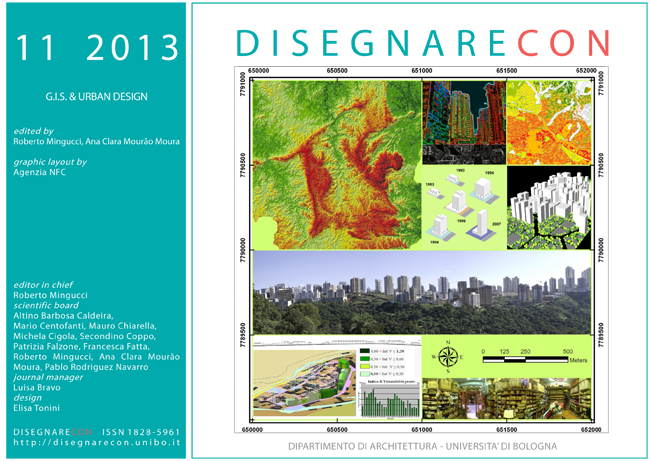Information Modeling in Creative Process – Innovative possibility of BIM in architectural and urban design processes
DOI:
https://doi.org/10.6092/issn.1828-5961/3378Keywords:
Building Information Modeling, BIM, Design Process.Abstract
The paper studies the use of Building Information Modeling - BIM in the design process and their contributions to do best buildings. For this, are defined the stages of the design process and proposed a theoretical model of the design process, by analogy to the theory of knowledge. In the theoretical model were considered the approaches of knowledge empiricist and rationalist. It was discussed the consequences of these approaches in the stage of the design of the idea. It was also presented a case study of practical use of BIM. The case study was analyzed against the theoretical model proposed. The conclusion indicated the importance of the use of BIM in the phase of conception of the idea, especially through simulations and (critical) tests (of our hypothesis) of design.
References
Andrade, M.; Ruschel, R. (2009). BIM: Conceitos, cenário das pesquisas publicadas no Brasil e tendências. Simpósio Brasileiro de Qualidade do Projeto no Ambiente Construído. São Carlos: Rima Editora. p. 602-613.
Baumgarten, A. G. (1993). Estetica: a logica da arte e do poema. Tradução de Miriam Sutter Medeiros. Petrópolis: Vozes. 191 p.
Basalla, G. (2001). A Evolução da Tecnologia. Porto: Porto Editora. 249 p.
Barlish, B.; Sullivan, K. (2012). How to measure the benefits of BIM — A case study approach. Automation in Construction, v. 24, p. 149-159, July 2012.
Eastman, C. et al. (2011). BIM Handbook: A Guide to Building Information Modeling for Owners, Managers, Designers, Engineers and Contractors. 2nd. ed. New Jersey: John Wiley & Sons. 640 p.
Einstein, A. (1982). Notas autobiograficas. 3nd. ed. Rio de Janeiro: Nova Fronteira. 88 p.
Ellis, B. A. (2006). Building Information Modeling: An Informational Tool for Stakeholders. Government/Industry Forum. Washington: Council, National Academies' Federal Facilities.
Fischer, M.; Kunz, J. (2004). The Scope and Role of Information Technology in Construction. Stanford University. Stanford, p. 1-8. 2004. CIFE Technical Report #156.
Gu, N.; London, L. (2010). Understanding and facilitating BIM adoption in the AEC industry. Automation in Construction, v. 19, n. 8, p. 988–999, December 2010.
Imai, M. (1986). Kaizen (Ky'zen): the key to Japan's competitive success. New York: Random House Business Division. 259 p.
Hauschild, M.; Karzel, R. (2011). Digital Processes. Munich: Birkhauser. 112 p.
Haymaker, J.; Kam, C.; Fischer, M. (2005). A methodology to plan, communicate and control multidisciplinary design processes. Construction Informatics Digital Librar.
Jones, J. C. (1992). Design methods. 2nd. ed. New York: [s.n.], 407 p.
Kneller, G. (1976). Arte e ciencia da criatividade. Tradução de Jose Reis. 4nd. ed. São Paulo: IBRASA, 121 p.
Lawson, B. (2010). How designers think: the design process demystified. 4nd. ed. Oxford; Boston: Architectural Press. 321 p.
Malard, M. L. (2003). O processo de projeto: Problemas a resolver. Belo Horizonte: Universidade Federal de Minas Gerais.
Markie, P. (2012). Rationalism vs. Empiricism. The Stanford Encyclopedia of Philosophy, Stanford.
Popov, V. et al. (2008). Application Of Building Information Modelling And Construction Process Simulation Ensuring Virtual Project Development Concept In 5d Environment. International Association of Automation and Robotics in Construction (IAARC). Vilnius: [s.n.]. p. 6616-624.
Popper, K. R. (2006). Conjecturas e refutações: o desenvolvimento do conhecimento científico. Tradução de Benedita Bettencourt. Coimbra: Almedina. 579 p.
Popper, K. R. (2010). Os Primordios do Racionalismo. In: MILLER, D. Textos escolhidos / Karl Popper. 1º edição. ed. Rio de Janeiro: PUC Rio. p. 25-31.
Sanguinetti, P. et al. (2012). General system architecture for BIM: An integrated approach for design and analysis. Advanced Engineering Informatics, v. 26, n. 2, p. 317–333, April 2012.
Tobin, J. (2008). Proto-Building: To BIM is to Build. www.aecbytes.com, 28 May. Available in: <http://www.aecbytes.com/buildingthefuture/2008/ProtoBuilding.html>. Access in: 12/12/2012.
Downloads
Published
How to Cite
Issue
Section
License
Copyright (c) 2013 Silvio Romero Fonseca Motta





